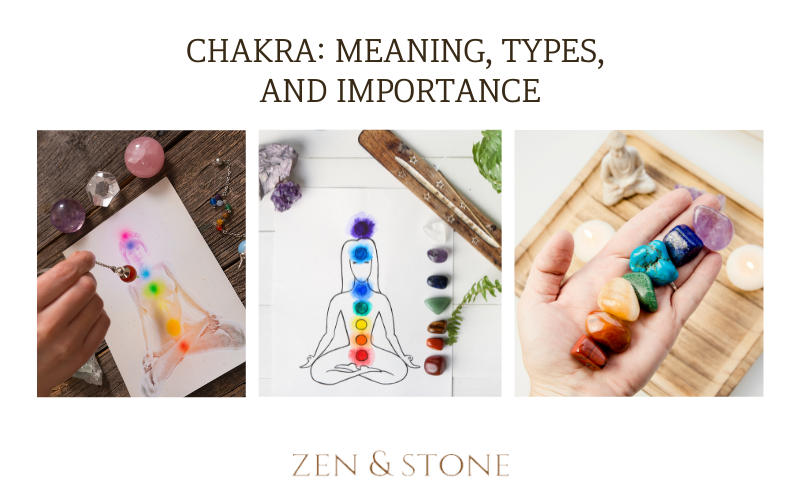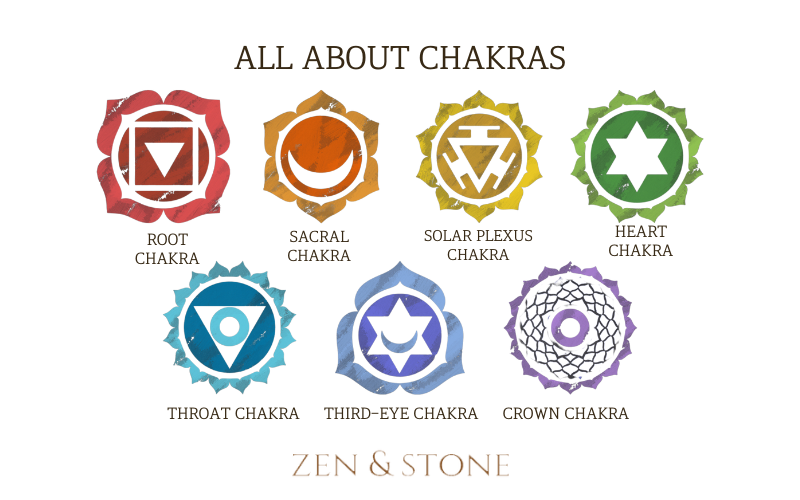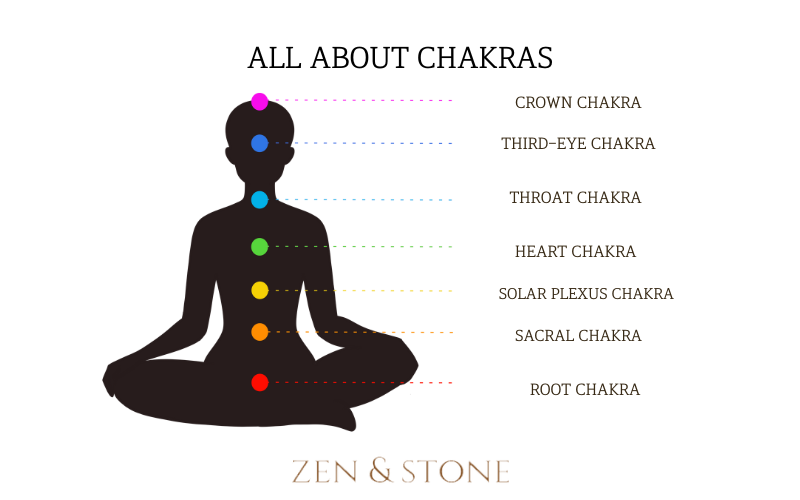
01 Dec Chakra: Meaning, Types, and Importance
What is a chakra? It is a question that most often comes to mind when people hear the word for the first time. Derived from Sanskrit, a philosophical language of religions, including Hinduism, Buddhism, and Jainism, it literally means “wheel”. The connotative application of the word, chakra, as used in yogi and the physiological practices of Hinduism and Tantric Buddhism, refers to centers of energy within the body.
Seeing the physical spine as corresponding to an astral one, spiritualists name specific upper chakras along this ‘highway” of spiritual light. Just as the spine runs from the base of the spine in the lower back to the brain of the physical body, the chakras or spiritual energy center of a person corresponds.
In This Article
What is a Chakra?
In answering the question of what a chakra is, it is necessary to explore a variety of sources. There is no precise timeline for when Yogis and practitioners began to recognize chakras. The concept of chakras started in India. The timeline is confusing because of references to the concept in holy books and writing that span a 1000-year block of history.
The Vedas meaning “knowledge” in Sanskrit is an ancient body of religious texts which are the oldest discovered scriptures of Hinduism. The Vedas are dated from 1500 BCE to 1200 BCE. The ancient writings in the Vedas will not answer the question, what is a chakra? It does however hold the first known reference to the concept. The Vedas do not specifically mention chakras as energy centers. There is a dispute that it is the forebearer of the concept of what is a chakra.
Moreover, in the Hindu Vedas, there is mention of a chakravartin as a king who turns the wheel. As well as that, Interpretations of the passage are in dispute among scholars who believe it is a physical reference to controlling his empire, and others interpret the passage as a metaphor for turning the wheels of the psychic connection to the universal energy. No matter how it is interpreted it is the first reference to a word whose root is a chakra.
In a continuation of written holy scriptures, there is a more direct reference in other Sanskirt literature. Shri Jabala Darshana Upanishad, the Cudamini Upanishad, the Yoga-Shikka Upanishad, and the Shandilya Upanishad are part of a series of writings, dating to between 500 BCE to 300 BCE, which all have more direct references to the concept of chakras as accepted today.
The concept of chakras and their importance in spiritual growth and with energy flowing was a part of India. Asia and Far East mysticism was practiced for thousands of years before being introduced to the West in the 20th Century. Sir John Woodroffe, a British author, who immersed himself in the concepts of mysticism, Hinduism, and the Tantra, was the first to answer the question of what is a chakra for the West in a series of books that he penned.
The simple explanation of what is a chakra is that it is a point of spiritual and or physical energy sources within the human body according to yogi philosophy.

How Many Chakras Are There?
There are primarily seven chakras, although those that dedicate their lives to the study of chakras and their meanings recognize one hundred and fourteen. Each of the seven main chakras is associated with a color. The color of each chakra signifies the spiritual, emotional, or physical state of the body. It is believed that there is a connection of colors that must be kept clear for emotional, physical, and spiritual health. On a higher level, a series of clear unblocked chakras are vital to a connection and flow of universal energy.
The seven chakras run from the base of the spine to the brain. The first chakra is the root chakra, it should be differentiated from the seven primary chakras which together are referred to as Root Chakras. The seven central or root chakras as they are referred to, their corresponding color, location, energy sources which they affect are:
- Root Chakra – Red – At the base of the spine – Survival, Vitality, Passion
- Sacral Chakra – Orange – At the lower abdomen – Creativity, Sexuality, Benevolence
- Solar Plexus Chakra (Manipura Chakra) or the Third Chakra – Yellow – At the upper abdomen – Intellect, Happiness, Impulses
- Heart Chakra (also known as Anahata Chakra) – Green – At the center of the chest – Love, Spirituality, Compassion
- Throat Chakra – Blue – At the throat – Communication, Emotion, Truth
- Third Eye Chakra (also known as the Ajna Chakra) – Purple – Between the eyes – Wisdom, Imagination, Rationality
- Crown Chakra (also known as Sahasrara Chakra) – Indigo – Top or Crown of the head – Spiritual Connectivity, Universal Understanding, Correlation to Afterlife

Importance of Chakra
Chakras play a vital role in our overall well-being, as they are the energy centers that regulate the flow of vital life force throughout our body. Understanding the importance of chakras and maintaining their balance is crucial for achieving optimal physical, emotional, and spiritual health.
Energy Flow and Vitality
- Chakras are like spinning wheels of energy that continuously circulate life force energy, also known as prana or chi, throughout our body. When the chakras are balanced and unobstructed, this energy flow remains harmonious, resulting in increased vitality, stamina, and overall physical well-being.
Emotional and Mental Balance
- Each chakra is associated with specific emotional and mental aspects of our being. When our chakras are balanced, it promotes emotional stability, enhances self-awareness, and supports mental clarity. By understanding and addressing imbalances within specific chakras, we can cultivate a greater sense of emotional well-being and mental equilibrium.
Physical Health and Healing
- Imbalances or blockages within the chakras can manifest as physical ailments and illnesses. By keeping our chakras in balance, we support the body’s natural ability to heal and maintain optimal health.
Conclusion
The object of chakra study is to learn how they relate to each other as well as the physical, emotional, intellectual, and spiritual centers of the person. Yogis believe as directed by centuries of holy writings and practice that the chakras must be kept “open” for emotional and physical well-being as well as intellectual and spiritual fulfillment.
